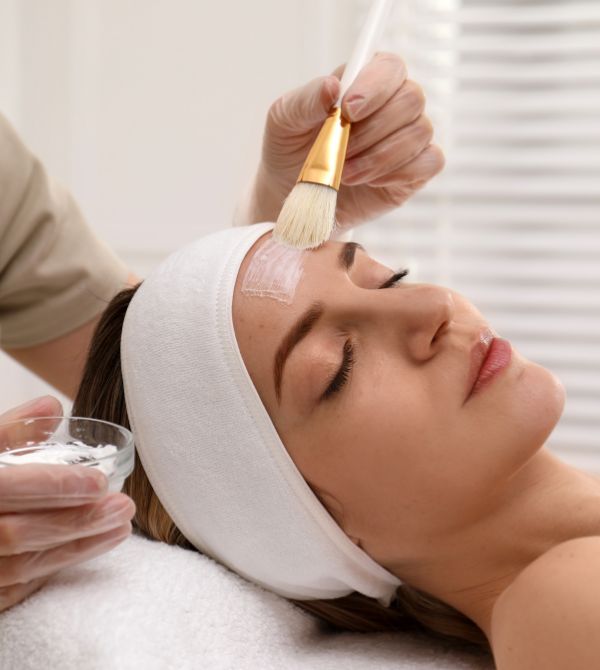Chemical peels are a popular treatment for various skin issues such as acne, pigmentation, fine lines, and sun damage. The procedure involves applying a chemical solution to the skin, which causes it to exfoliate and reveal fresher, smoother skin. However, like any cosmetic treatment, chemical peels come with the potential for side effects, especially if the treatment isn’t done correctly or the skin isn’t cared for properly afterward.
If you are considering Chemical Peeling treatment in Islamabad, it’s important to understand what side effects might arise and how to manage them effectively. In this blog, we’ll explore common side effects of chemical peels and provide you with tips on how to manage them for the best results.
Understanding Chemical Peels
Before we dive into managing side effects, it’s helpful to understand the basics of a chemical peel. Chemical peels are classified into three types:
- Superficial Peels (Light Peels): These peels work on the outermost layer of the skin. They treat mild skin concerns like fine lines, minor acne, and uneven texture.
- Medium Peels: These penetrate deeper into the skin and address more moderate issues like age spots and acne scars.
- Deep Peels: These are the most intense and target deeper layers of skin to treat severe wrinkles, sun damage, and deep scars.
Each of these peels has different levels of intensity and healing time, and the risk of side effects can vary accordingly. However, regardless of the type, it is important to manage potential side effects to ensure a successful outcome.
Common Side Effects of Chemical Peels
Chemical peels are generally safe when performed by an experienced professional. However, like all procedures, they can cause some temporary side effects. Below are the most common side effects and tips on how to manage them:
1. Redness and Irritation
After a chemical peel, it’s normal for your skin to appear red, irritated, and inflamed. This side effect is usually mild and temporary, especially after a superficial peel.
How to manage it:
- Avoid direct sun exposure for at least two weeks after the procedure to prevent further irritation and the risk of hyperpigmentation.
- Use a gentle moisturizer to help soothe and hydrate your skin.
- Avoid using harsh skincare products, such as exfoliants, until your skin has fully healed.
2. Peeling and Flaking
As the skin begins to exfoliate, peeling and flaking are common, particularly with medium and deep peels. While this is a natural part of the healing process, it can sometimes be uncomfortable.
How to manage it:
- Don’t pick or peel the skin manually. Let the skin shed naturally to avoid scarring or irritation.
- Use a hydrating lotion or serum to keep your skin moisturized and reduce the discomfort of peeling.
- If your skin is excessively dry, a thick, emollient cream can help lock in moisture and protect the skin barrier.
3. Swelling
Mild swelling around the treated area is normal after a chemical peel, especially with deeper treatments. The swelling can occur around the eyes, lips, and cheeks.
How to manage it:
- Apply cold compresses to the affected area for 10-15 minutes at a time to reduce swelling.
- Keep your head elevated while sleeping for the first few nights to minimize fluid retention in your face.
- If the swelling is severe, consult your dermatologist for advice on over-the-counter anti-inflammatory medications like ibuprofen.
4. Hyperpigmentation
While chemical peels can help lighten dark spots, some people may experience post-inflammatory hyperpigmentation (PIH), which causes dark patches to appear on the skin after the treatment.
How to manage it:
- Apply sunscreen with SPF 30 or higher at all times. This is crucial for preventing PIH, as UV exposure can worsen pigmentation issues.
- Choose a gentle peel or opt for peels with ingredients like glycolic acid, which are less likely to cause pigmentation changes in darker skin tones.
- Consult your dermatologist if you notice persistent or unusual pigmentation after your peel for appropriate treatment.
5. Scarring
Though rare, chemical peels can cause scarring if not performed correctly or if post-peel care isn’t properly followed.
How to manage it:
- Seek professional help. Always get your chemical peel done by an experienced dermatologist or licensed practitioner to minimize the risk of scarring.
- Follow aftercare instructions carefully. Avoid picking at your skin and follow all post-treatment skincare guidelines to support the healing process.
- If you experience scarring, consult your dermatologist for treatments like laser therapy or micro-needling to help improve the appearance of scars.
6. Infection
Infection is a risk associated with any procedure that causes skin to be broken or compromised, though it is rare with chemical peels.
How to manage it:
- Use antibacterial creams or ointments as recommended by your dermatologist to reduce the risk of infection.
- Keep the treated area clean and dry to prevent the growth of bacteria.
- If you notice any signs of infection, such as increased redness, pus, or pain, contact your healthcare provider immediately.
How to Prevent and Minimize Side Effects
While some side effects are unavoidable, there are several steps you can take to minimize risks and enhance the effectiveness of your chemical peel.
- Choose the Right Peel for Your Skin Type Each individual has a unique skin type and concerns, so it’s important to select the right chemical peel for your needs. A professional consultation before the treatment will ensure that your skin is suited for the specific peel type.
- Follow Aftercare Instructions Your dermatologist or esthetician will provide you with detailed aftercare instructions that should be followed closely. These instructions are designed to help your skin heal and prevent complications.
- Stay Consistent with Your Skincare Routine After a chemical peel, use a gentle, hydrating skincare routine that includes products like gentle cleansers, moisturizers, and sunscreens. Avoid harsh products that could irritate your newly exfoliated skin.
- Avoid Sun Exposure Sun exposure can worsen side effects like pigmentation issues and irritation. Apply broad-spectrum sunscreen daily and reapply it every two hours when outdoors.
- Consult a Professional If you experience any concerning side effects, reach out to your dermatologist immediately for advice and treatment.
Conclusion
Managing the side effects of chemical peels is essential for ensuring the best possible results and maintaining healthy, glowing skin. Understanding the potential side effects and following proper aftercare guidelines will help minimize risks and promote faster recovery.
If you are considering Chemical Peeling in Islamabad, it’s important to work with a professional who can provide personalized care and guide you through every step of the process. Dynamic Clinic offers expert chemical peel treatments with a focus on your skin’s unique needs. Contact us today to schedule a consultation and learn how our treatments can help you achieve flawless, youthful skin.



